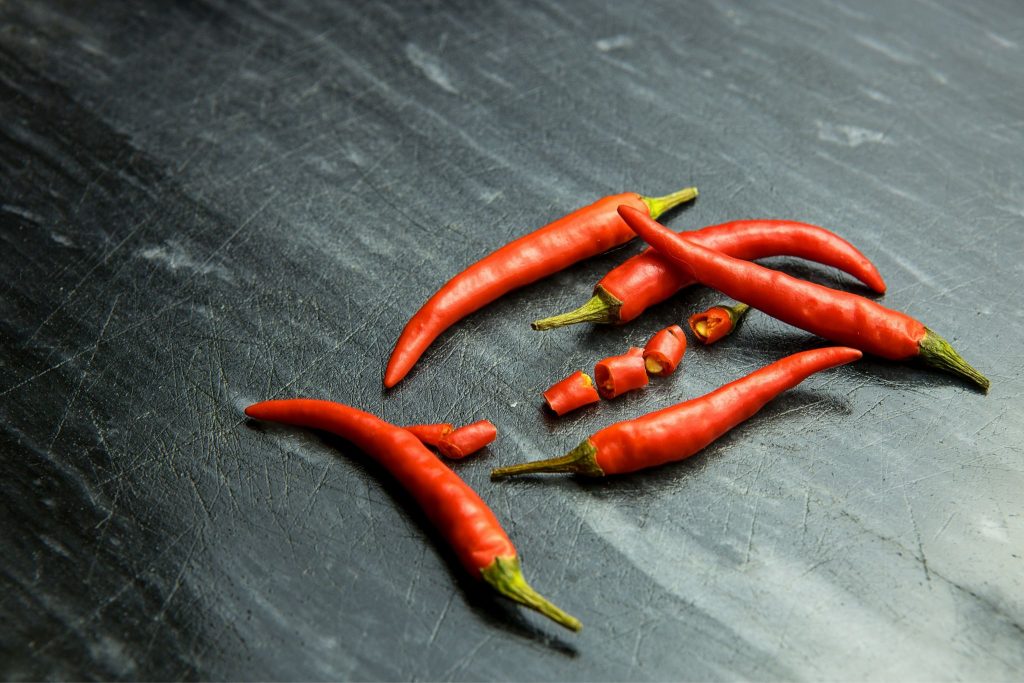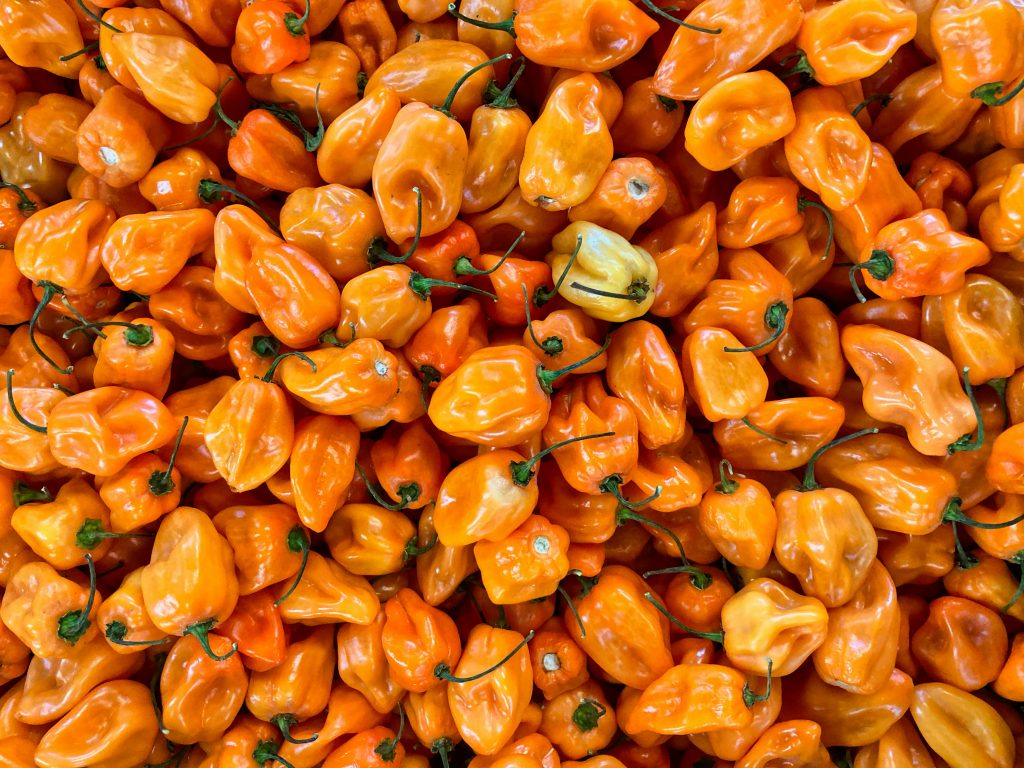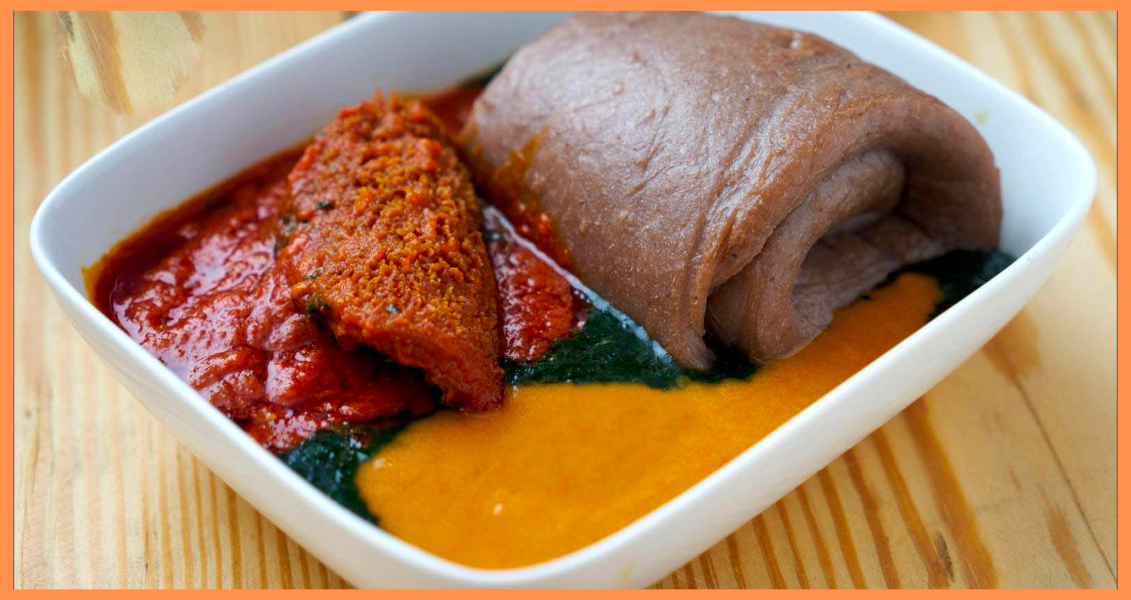Remember your first taste of peppery Nigerian stew? The way your lips tingled, your eyes watered, and yet, you couldn’t resist another delicious spoonful? We had the same experience in Abeokuta recently, and couldn’t help but wonder about the complexities of chilli peppers.
There are over 4,000 varieties of chilli peppers worldwide, but only a few are grown here in Nigeria. Some of them are spicy, while some are sweet, and some of them have unique flavours that give certain meals their signature taste. In Nigeria, they’re more than just add-ons to a dish. Chilli peppers hold a special place in the heart of Nigerian cuisine, infusing dishes with depth, complexity, and, of course, a kick of heat.
But have you ever wondered what ignites this fiery sensation on your tongue? What makes a sweet plate of stew a bit hotter? We’ll explore the diverse personalities of chilli peppers, unravelling their elements and celebrating their significance in Nigerian cuisine.
The chemistry of peppers
Taking a look at a chilli pepper, what appears to be a simple fruit contains a complex chemical compound with an interesting purpose. Capsaicin is the fiery compound behind the heat of chilli peppers. It serves as a natural defence mechanism, deterring animals from consuming the peppers due to their intense spiciness. Ironically, it is this spiciness that makes people like you and I buy baskets of peppers.
Beyond its role as a deterrent for chilli peppers, capsaicin holds remarkable therapeutic benefits. Studies have shown that capsaicin increases metabolism, which in turn leads to weight loss. Also, capsaicin helps fight inflammation and can even reduce pain when it’s applied topically.
Peppers in Nigerian cuisine
Just like we said earlier, chilli peppers are more than just spicy ingredients to Nigerians. In many Nigerian meals, a mix of peppers form the basis of the distinct flavours of the dish. There are more than 5 peppers commonly used in Nigerian cuisine, but they’re also very different. How does tatashe taste? What’s the difference between shombo and ata rodo? We’ll answer these questions and more.
Scotch Bonnet
Also known as Ata rodo in Yoruba and Ose Oji in Igbo, the scotch bonnet is the undisputed king of heat in Nigerian cuisine. When this pepper is ripe, it’s red in colour and has wrinkled skin. On the Scoville scale—the official heat measurement scale for chilli peppers—it can score from 100,000 to 325,000 Scoville units. That’s enough to make even the most seasoned spice lovers sweat.
But beneath the fire, Ata Rodo boasts a complex fruity sweetness and a hint of smokiness, making it a perfect choice for stews and soups like Egusi and Banga, adding depth and fiery dimension.

Bell Pepper
Tatashe, known as Ose mgbirigba in Igbo, is the gentle giant of chilli peppers. Known as bell peppers in English (probably because they are usually shaped like a bell), they score just 200-500 units on the Scoville scale. They have smooth, glossy skin and their mild heat and sweet taste makes it a versatile player in Nigerian kitchens.
There are also several colours of these bell peppers like the common red, yellow, and green when unripe. These different varieties also produce distinct tastes in food. The green and unripe peppers have a slightly bitter taste, the yellow peppers are a little bit sweeter than the green peppers, and the red peppers in their full power are the sweetest with the most heat.
Tatashe adds a vibrant sweetness to stews and sauces. Its mild heat and large water content is perfect for brightening up stir-fries and salads, bringing a touch of fresh vibrancy without the heat.


Cayenne Pepper
Cayenne pepper or shombo, also called Ata Ijosi in Yoruba and Ose talugwu in Igbo, is a long, slender and smooth chilli pepper with moderate heat. It pulls from 30,000-50,000 units on the Scoville scale and produces a deep, smoky aroma and red colour that adds a unique dimension when added to dishes.
Shombo is perfect for cooking grilled meats and fish to achieve a rich, smoky depth. It can also add a little kick to soups that don’t need a lot of heat like Okra Soup, and meals like moin moin and gizdodo.

Habanero Pepper
The Habanero pepper is definitely a fiery force to be reckoned with. This vibrantly coloured pepper, ranging from orange to red, packs a serious punch on the Scoville scale, with between 100,000 and 350,000 units—that’s way hotter than the Scotch Bonnet.
This makes Habanero a popular choice for adding spice to salsas, hot sauces, and marinades. It’s also perfect for soups and stews that require some heat like pepper soup or Ofada stew. Just like bell peppers, Habanero peppers have lots of variety too. One that might sound familiar to you is Cameroon pepper, and we all know how fiery this spice is. With Habanero peppers, we just have one closing tip— a little goes a long way!

Why are peppers so important in Nigerian cuisine?
While the peppery sensation brought on by chilli peppers on your tongue is undeniable, they also pack a surprising health punch. As mentioned earlier, capsaicin, the molecule responsible for the heat, has potential benefits like pain relief, aiding digestion, and even boosting metabolism. This makes it no surprise that our ancestors incorporated these chilli peppers into a lot of our favourite meals.
A popular Yoruba proverb says “Ẹmi ti o jẹ ata, ẹmi yẹpẹrẹ ni” and translates to “A soul that does not eat pepper is a weak soul”. Many may think that this means that anyone who can’t take the heat of a peppery dish is weak, but our takeaway from this proverb is that leaving chilli peppers out of your diet means you’re missing out on a lot of health benefits. Basically, peppers might flavour and heat, but they’re also doing your body a favour!
But the significance of peppers transcends mere health benefits. In Nigeria, peppers are deeply embedded in cultural traditions and beliefs. For some communities, they ward off evil spirits, symbolise strength and resilience, and are even used in healing rituals. Other peppers like Alligator pepper are also used to ward off evil spirits, promote good luck, or as an aphrodisiac.
So, the next time you bite into a Nigerian dish that makes your eyes water, remember – it’s not just about the peppery flavour. It’s about the cultural heritage, and the generations of wisdom that led to these recipes. Peppers hold a special place in Nigerian cuisine, and we hope you now realise that there’s more to them than just the spice.
For more captivating stories on food, travel and adventure, subscribe to the Deliciously Newsletter!














